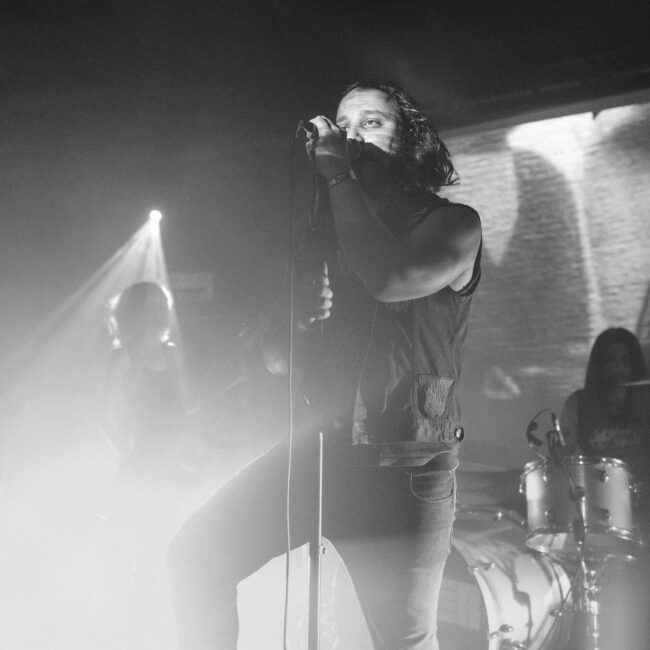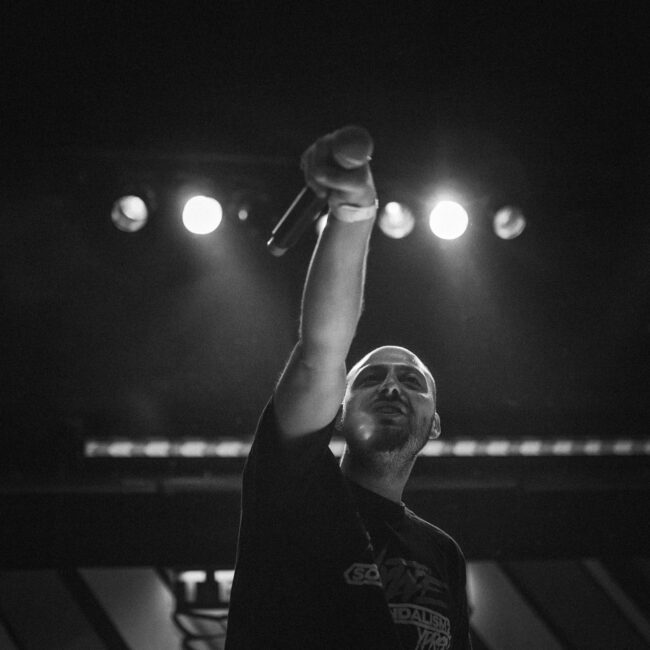From street to landscape, from portrait to travel – the 35mm is an all-around lens, and it can be used for shooting basically anything. But what about concert photography, where a zoom lens is the norm? Is it any good there as well? This article covers some practical suggestions for photographing concerts with a 35mm lens, along with broader concert photography tips in general.From what I’ve noticed, most concert photographers stick to zooms. Usually, that means a 24-70 or 70-200, although they might go outside that range depending upon the venue.
There is no doubt that zoom lenses are convenient when it comes to events, but I don’t like to think of a concert as an event. Instead, I prefer to think about the music, passion, emotion, and light from the perspective of the people in front of the stage.
As a hobbyist musician and a music listener, the first thing I want to see is the vibe of the concert. From what I’ve seen – and it’s my personal opinion – 70-200 on concert shots is like documenting something for the sake of having it documented. It looks kind of sterile. Yes, there are times that a tele lens is needed, but it tends to be in a big hall or a stadium.
So, in short, yes! The 35mm focal length is great for concert photography, although only if the venue is small to medium and lets you get close enough to the stage. If you end up in a huge hall or a stadium where you have to stand farther back, you’d definitely miss your tele zoom lenses. Almost all of the photos in this article were taken with a 35mm.
Here is what you have to take into consideration before shooting a live concert, particularly with a prime lens:
Table of Contents
- Know the Venue
- Know the Performer
- The Style of Music Matters
- Acknowledge the Lighting
- Using Practical Effects
- Know Your Equipment
- Flash
- Anticipate the Shot
من الشارع إلى المناظر الطبيعية، ومن الصورة الشخصية إلى السفر – تعد العدسة مقاس 35 مم عبارة عن عدسة شاملة، ويمكن استخدامها لتصوير أي شيء بشكل أساسي. ولكن ماذا عن التصوير الفوتوغرافي للحفلات الموسيقية، حيث تعد عدسة التكبير هي القاعدة؟ هل هو جيد هناك أيضا؟ تتناول هذه المقالة بعض الاقتراحات العملية لتصوير الحفلات الموسيقية باستخدام عدسة مقاس 35 مم، بالإضافة إلى نصائح أوسع لتصوير الحفلات بشكل عام.
مما لاحظته، أن معظم مصوري الحفلات الموسيقية يلتزمون بالتكبير/التصغير. عادةً ما يعني ذلك 24-70 أو 70-200، على الرغم من أنها قد تتجاوز هذا النطاق اعتمادًا على المكان.
ليس هناك شك في أن عدسات التكبير ملائمة عندما يتعلق الأمر بالأحداث، لكنني لا أحب أن أفكر في الحفلة الموسيقية كحدث. بدلاً من ذلك، أفضّل التفكير في الموسيقى والعاطفة والعاطفة والضوء من وجهة نظر الأشخاص الذين يقفون أمام المسرح.
باعتباري موسيقيًا هاويًا ومستمعًا للموسيقى، فإن أول شيء أريد رؤيته هو أجواء الحفل. مما رأيته – وهو رأيي الشخصي – فإن 70-200 في لقطات الحفلة الموسيقية يشبه توثيق شيء ما من أجل توثيقه. يبدو نوعا من العقيمة. نعم، هناك أوقات تكون هناك حاجة إلى عدسة مقربة، ولكنها تميل إلى أن تكون في قاعة كبيرة أو ملعب.
إذن، باختصار، نعم! يعد الطول البؤري 35 مم رائعًا للتصوير الفوتوغرافي للحفلات الموسيقية، على الرغم من أنه فقط إذا كان المكان صغيرًا إلى متوسطًا ويتيح لك الاقتراب بدرجة كافية من المسرح. إذا انتهى بك الأمر في قاعة ضخمة أو ملعب حيث يتعين عليك الوقوف في الخلف، فمن المؤكد أنك ستفتقد عدسات التكبير عن بعد. تم التقاط جميع الصور الواردة في هذه المقالة تقريبًا باستخدام عدسة مقاس 35 مم.
إليك ما يجب عليك مراعاته قبل تصوير حفل موسيقي مباشر، خاصة باستخدام العدسة الأساسية:
جدول المحتويات
تعرف على المكان تعرف على المؤدي أسلوب الموسيقى المهم تعرف على الإضاءة استخدام المؤثرات العمليةتعرف على معداتك فلاش توقع اللقطة
Know the Venue
Knowing the venue is essential and will make your time shooting a show a lot easier. This is especially true if you plan to photograph the concert mainly or entirely with a prime lens, where you will have less leeway in where you should stand to capture a workable composition.
Get in early, and get familiar with the space. Try finding the sure compositions – a terrace to shoot from, a space somewhere in front of the stage, some stairs to get a high vantage point, and so on. There are usually a few shots you can plan out ahead of time simply by having a good understanding of the venue.
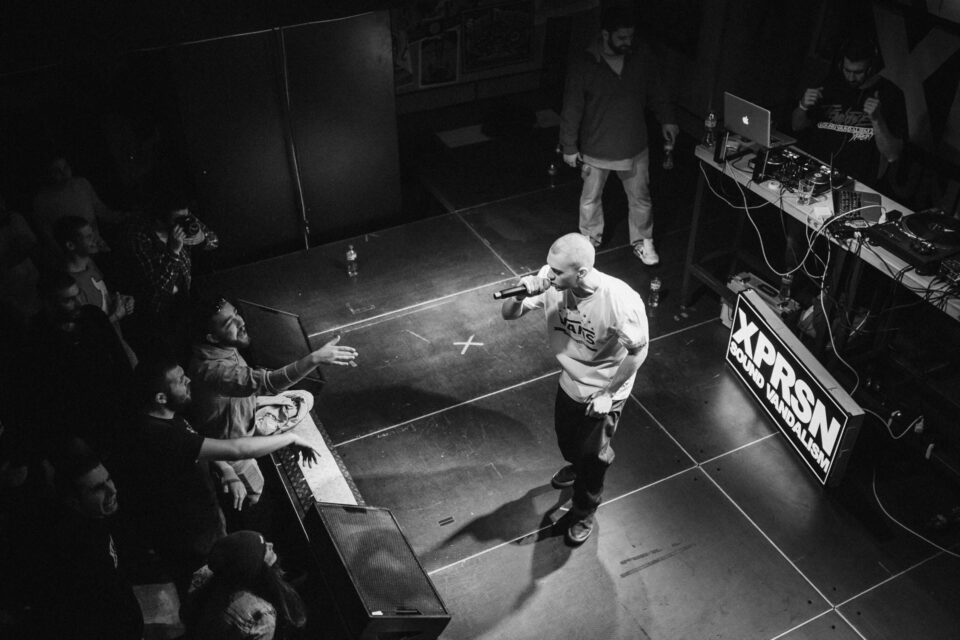 Canon EOS 5D Mark II + 35mm @ 35mm, ISO 3200, 1/320, f/1.4
Canon EOS 5D Mark II + 35mm @ 35mm, ISO 3200, 1/320, f/1.4
تعرف على المكان
تعد معرفة المكان أمرًا ضروريًا وستجعل وقتك في تصوير العرض أسهل كثيرًا. وينطبق هذا بشكل خاص إذا كنت تخطط لتصوير الحفل بشكل أساسي أو كلي باستخدام عدسة أساسية، حيث سيكون لديك حرية أقل في المكان الذي يجب أن تقف فيه لالتقاط تركيبة قابلة للتطبيق.
ادخل مبكرًا، وتعرف على المساحة. حاول العثور على التركيبات المؤكدة – شرفة للتصوير منها، ومساحة في مكان ما أمام المسرح، وبعض السلالم للحصول على نقطة مراقبة عالية، وما إلى ذلك. عادة ما يكون هناك عدد قليل من اللقطات التي يمكنك التخطيط لها مسبقًا من خلال الفهم الجيد للمكان.
Know the Performer
Knowing the performer or performers is essential when shooting shows. What are their most popular songs? Do they do a performance other than playing? Most big performers have some kind of quirks during shows to help them catch their breath. It might be a short speech, or perhaps a brief story explaining the next song. These moments are perfect for getting a strong hero-like shot.
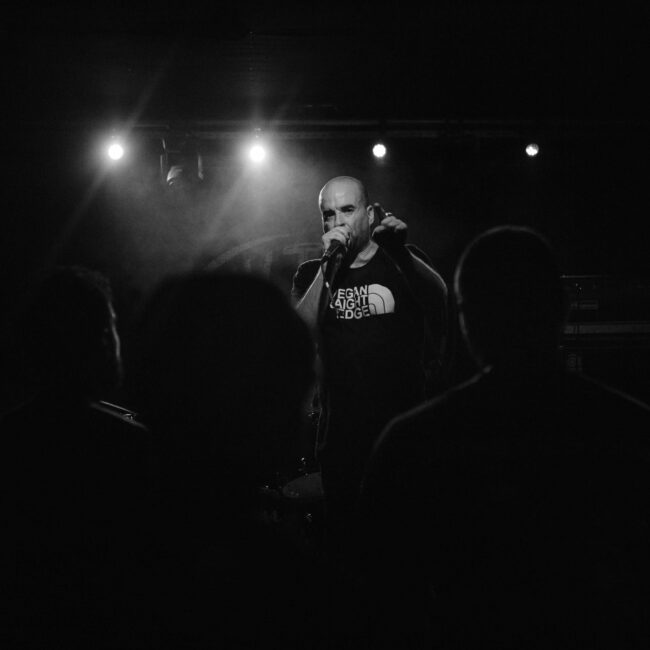 Canon EOS 5D Mark II + 35mm @ 35mm, ISO 3200, 1/2500, f/2.0
Canon EOS 5D Mark II + 35mm @ 35mm, ISO 3200, 1/2500, f/2.0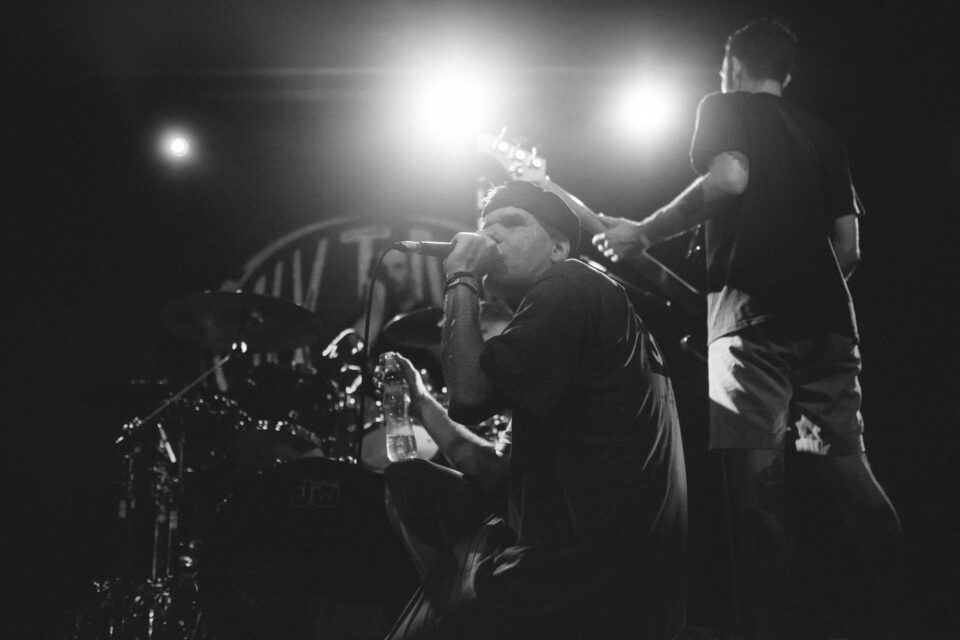 Canon EOS 5D Mark II + 35mm @ 35mm, ISO 4000, 1/1000, f/1.4
Canon EOS 5D Mark II + 35mm @ 35mm, ISO 4000, 1/1000, f/1.4
Still, although it is nice, this step isn’t totally necessary.
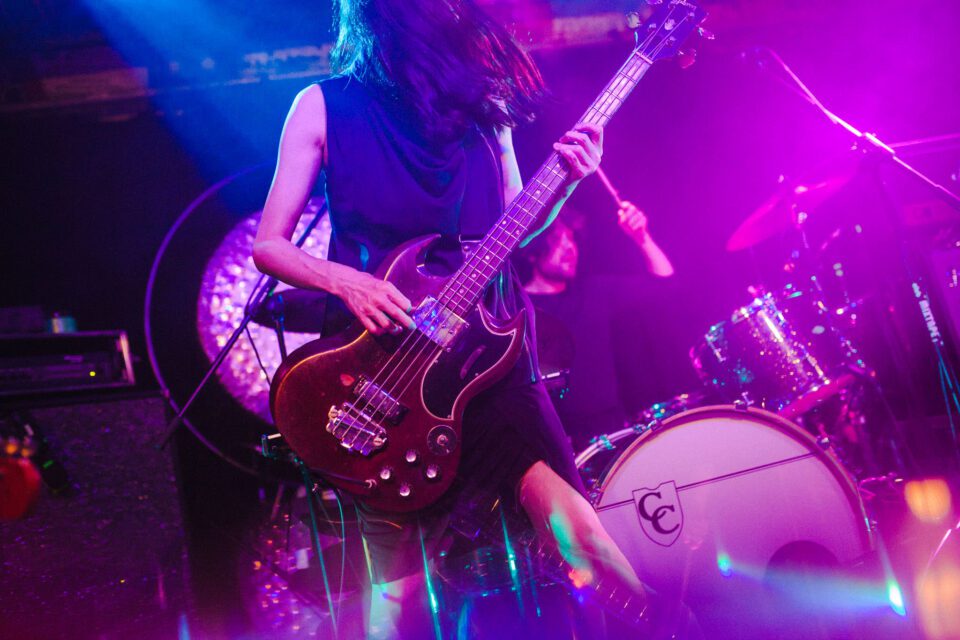 Canon EOS 5D Mark II + 35mm @ 35mm, ISO 6400, 1/500, f/2.0
Canon EOS 5D Mark II + 35mm @ 35mm, ISO 6400, 1/500, f/2.0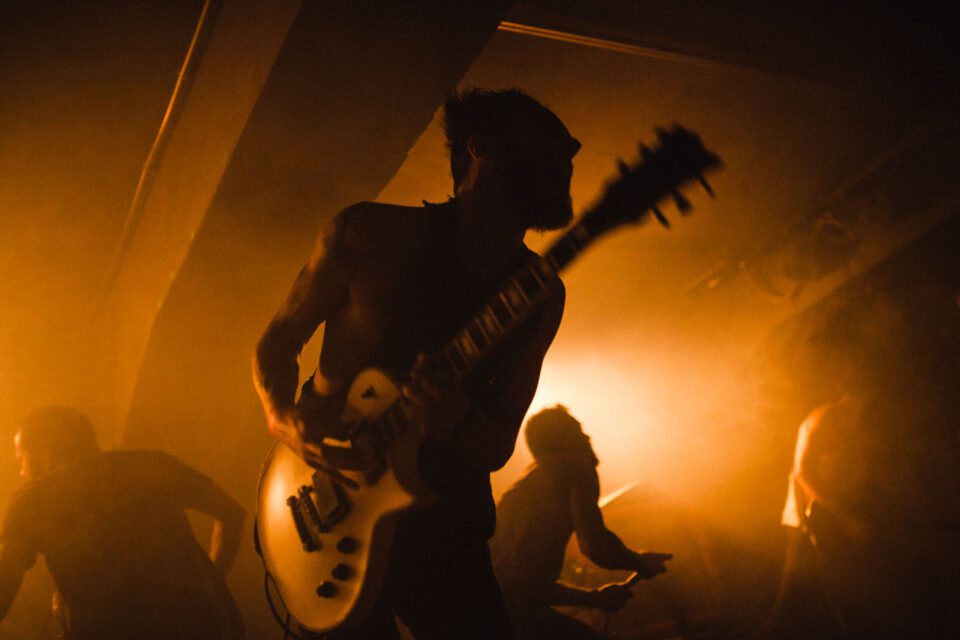 Canon EOS 5D Mark II + 35mm @ 35mm, ISO 3200, 1/250, f/1.8
Canon EOS 5D Mark II + 35mm @ 35mm, ISO 3200, 1/250, f/1.8
تعرف على المؤدي
تعد معرفة المؤدي أو فناني الأداء أمرًا ضروريًا عند تصوير العروض. ما هي أشهر أغانيهم؟ هل يقومون بأداء آخر غير اللعب؟ معظم الفنانين الكبار لديهم نوع من المراوغات أثناء العروض لمساعدتهم على التقاط أنفاسهم. قد يكون خطابًا قصيرًا، أو ربما قصة مختصرة تشرح الأغنية التالية. هذه اللحظات مثالية للحصول على لقطة قوية تشبه البطل.
كاميرا Canon EOS 5D Mark II + 35 مم عند 35 مم، ISO 3200، 1/2500، f/2.0
كاميرا Canon EOS 5D Mark II + 35 مم عند 35 مم، ISO 4000، 1/1000، f/1.4
ومع ذلك، على الرغم من أنها لطيفة، إلا أن هذه الخطوة ليست ضرورية تمامًا.
كاميرا Canon EOS 5D Mark II + 35 مم عند 35 مم، ISO 6400، 1/500، f/2.0
كاميرا Canon EOS 5D Mark II + 35 مم عند 35 مم، ISO 3200، 1/250، f/1.8
Acknowledge the Lighting
This section is the most important one. Light, or the lack of it, is what makes an image.
Most venues have decent lighting setups, and you shouldn’t have any troubleshooting. Of course, there are exceptions. I’ve had the pleasure to experience and shoot a grand audio-visual performance in a venue with an awful stage and lighting (shown below). This is when I started appreciating the person behind the lighting mixer, who, in this case, had a lot of experience. There is a huge difference.
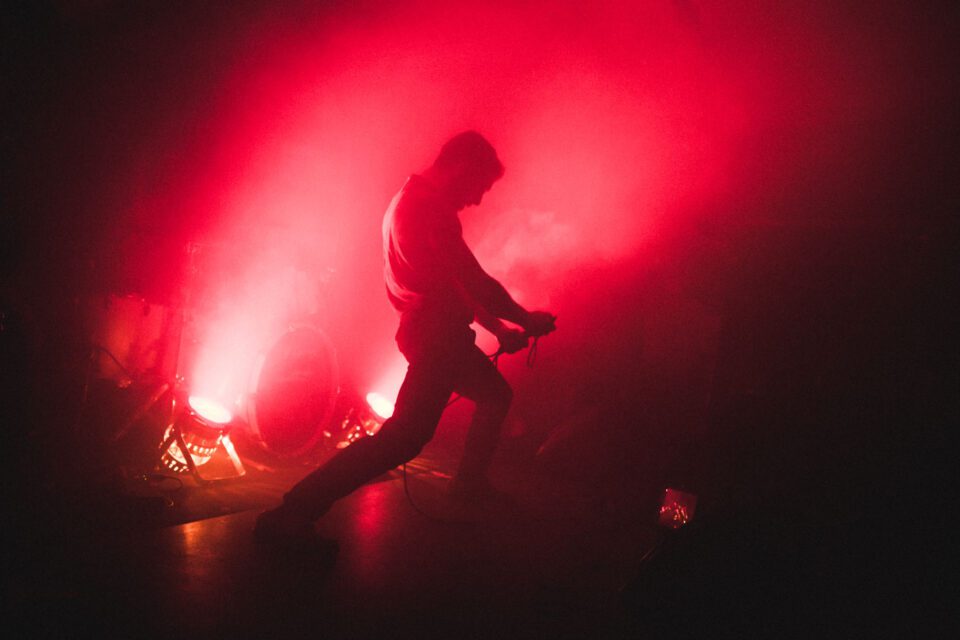 Canon EOS 5D Mark II + 35mm @ 35mm, ISO 3200, 1/125, f/1.8
Canon EOS 5D Mark II + 35mm @ 35mm, ISO 3200, 1/125, f/1.8
Most performers will bring their own lighting setup and/or fog machine. I’ve seen a lot of DIY light sources like construction lights, theatre lights, and so on. Do not be upset by this – with a little effort, they can lead to quite satisfying results.
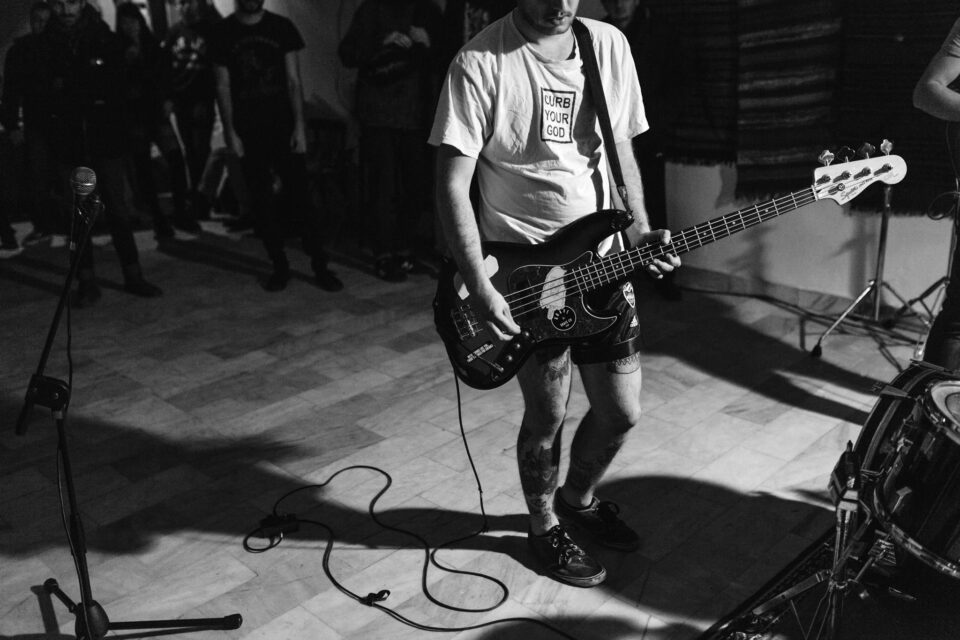 Canon EOS 5D Mark II + 35mm @ 35mm, ISO 5000, 1/250, f/2.0
Canon EOS 5D Mark II + 35mm @ 35mm, ISO 5000, 1/250, f/2.0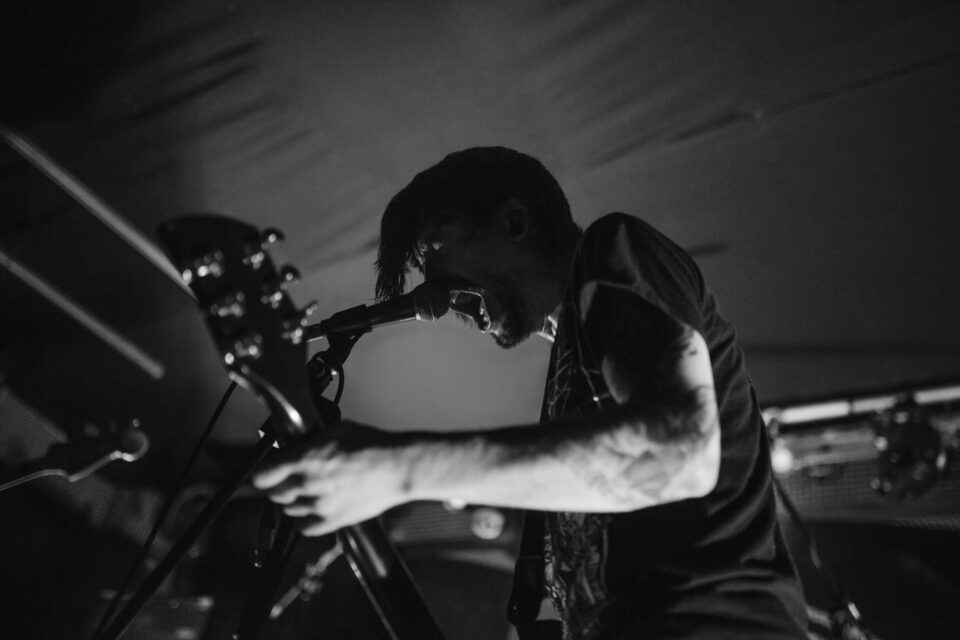 Canon EOS 5D Mark II + 35mm @ 35mm, ISO 5000, 1/50, f/1.4
Canon EOS 5D Mark II + 35mm @ 35mm, ISO 5000, 1/50, f/1.4
It is very important to train your eye to know how an image will look with the light you have at the exact moment. This may vary if the music is fast because the stage lighting almost always mimics it.
الاعتراف بالإضاءة
هذا القسم هو الأكثر أهمية. الضوء، أو عدم وجوده، هو ما يصنع الصورة.
تتمتع معظم الأماكن بإعدادات إضاءة جيدة، ومن المفترض ألا يكون لديك أي استكشاف للأخطاء وإصلاحها. بالطبع، هناك استثناءات. لقد كان من دواعي سروري تجربة وتصوير أداء سمعي ومرئي رائع في مكان به مسرح وإضاءة سيئة (كما هو موضح أدناه). وهنا بدأت أقدر الشخص الذي يقف وراء خلاط الإضاءة، والذي، في هذه الحالة، كان يتمتع بخبرة كبيرة. هناك فرق كبير.
كاميرا Canon EOS 5D Mark II + 35 مم عند 35 مم، ISO 3200، 1/125، f/1.8
سيحضر معظم فناني الأداء إعدادات الإضاءة الخاصة بهم و/أو آلة الضباب. لقد رأيت الكثير من مصادر الإضاءة التي يمكنك صنعها بنفسك مثل أضواء البناء وأضواء المسرح وما إلى ذلك. لا تنزعجي من هذا – فبقليل من الجهد، يمكن أن تؤدي إلى نتائج مرضية تمامًا.
كاميرا Canon EOS 5D Mark II + 35 مم عند 35 مم، ISO 5000، 1/250، f/2.0
كاميرا Canon EOS 5D Mark II + 35 مم عند 35 مم، ISO 5000، 1/50، f/1.4
من المهم جدًا تدريب عينك على معرفة كيف ستبدو الصورة مع الضوء الموجود لديك في اللحظة المحددة. قد يختلف هذا إذا كانت الموسيقى سريعة لأن إضاءة المسرح تحاكيها دائمًا.
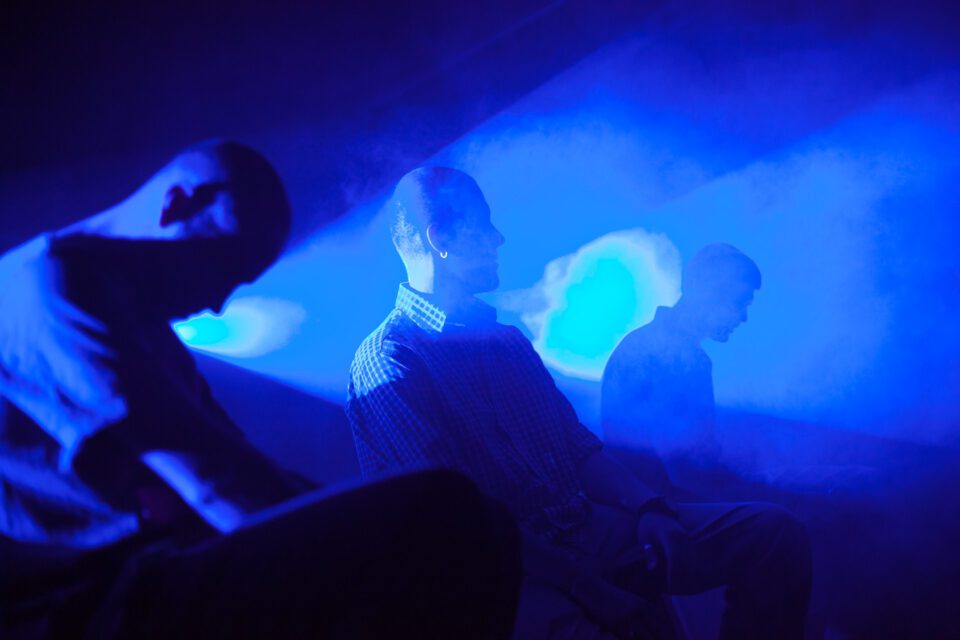 The blue light here has way too much saturation.
The blue light here has way too much saturation.Canon EOS 5D Mark II + EF50mm f/1.4 USM @ 50mm, ISO 3200, 1/320, f/2.0
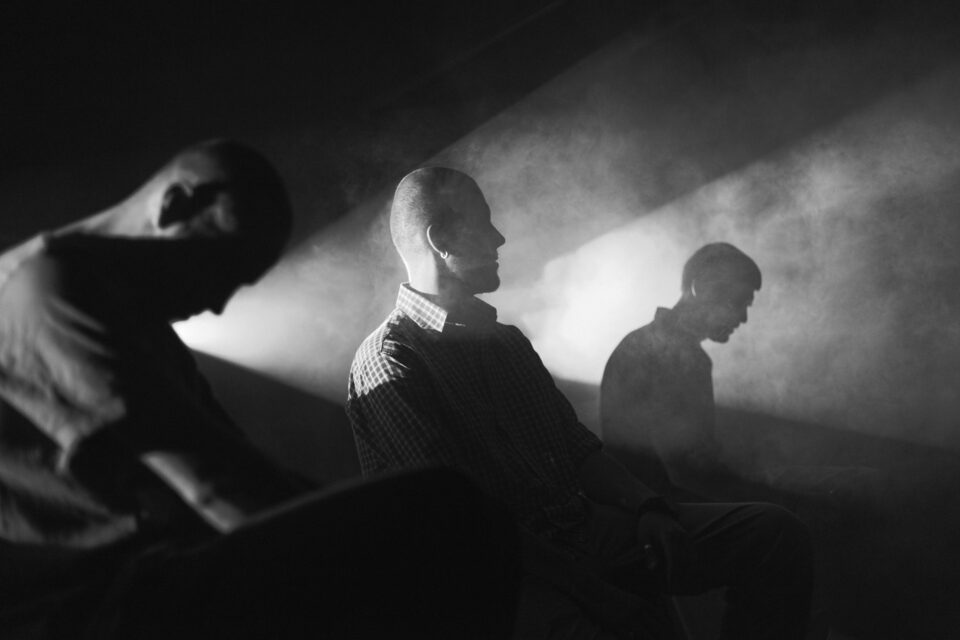 Converting this concert photo into black and white helped it quite a bit.
Converting this concert photo into black and white helped it quite a bit.Canon EOS 5D Mark II + EF50mm f/1.4 USM @ 50mm, ISO 3200, 1/320, f/2.0
And in this case, a bit of editing helped bring back some of the washed-out colors (and eliminate some distractions):
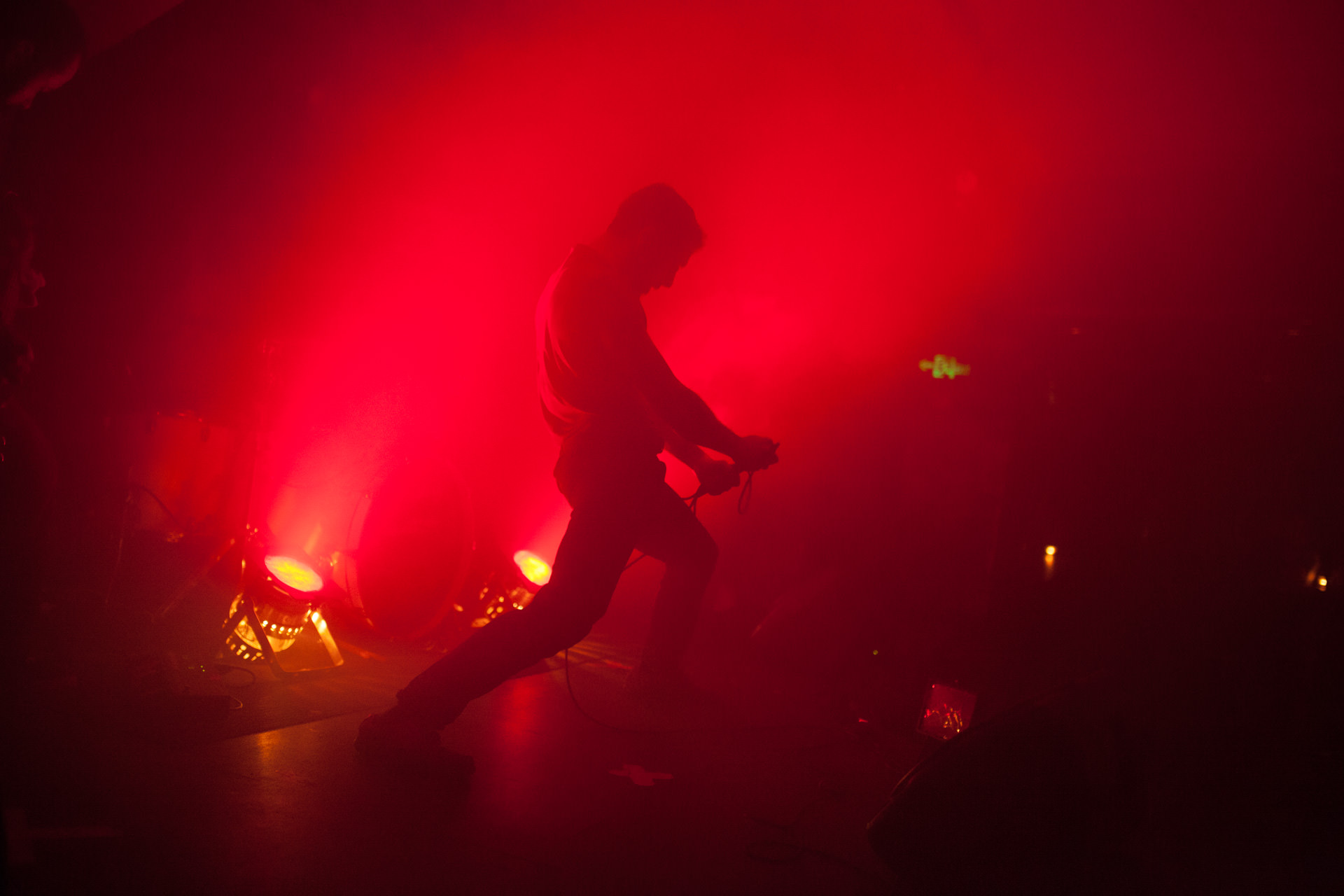

Pay close attention to harsh, spontaneous backlighting. It is strong and fast, which makes it hard to expose – but if you manage to do it, the result can be brilliant.
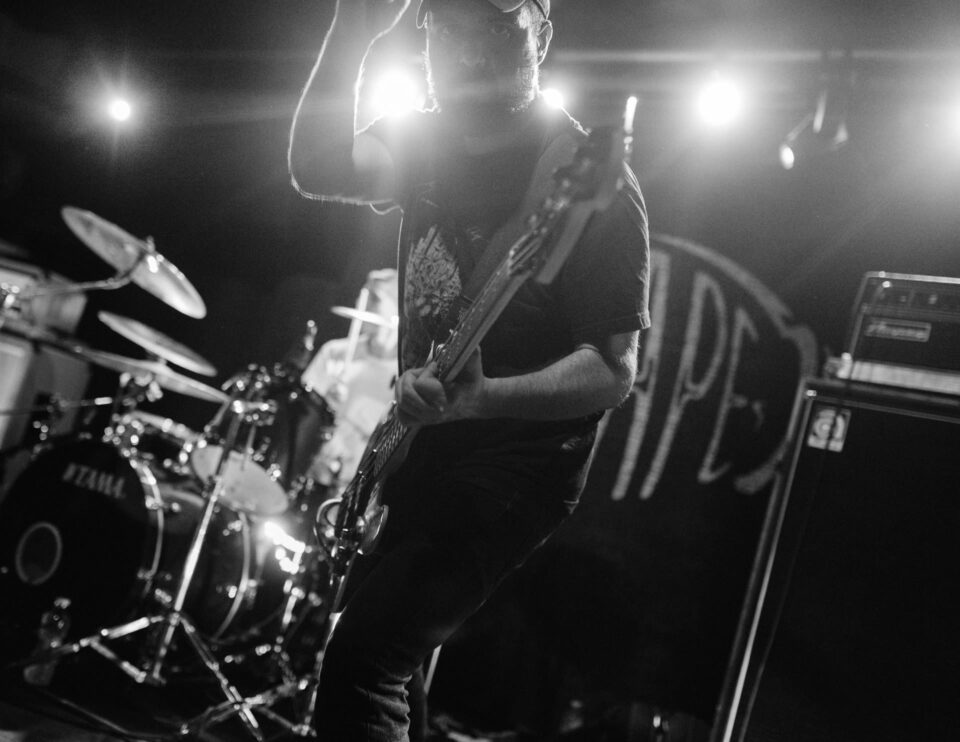 Canon EOS 5D Mark II + 35mm @ 35mm, ISO 4000, 1/250, f/2.0
Canon EOS 5D Mark II + 35mm @ 35mm, ISO 4000, 1/250, f/2.0 Canon EOS 5D Mark II + 35mm @ 35mm, ISO 4000, 1/2500, f/2.5
Canon EOS 5D Mark II + 35mm @ 35mm, ISO 4000, 1/2500, f/2.5And if you are using a prime lens, including a 35mm, you will have to pay even more attention to how you are composing your photo and using the light, since the only way to change your composition is to move your camera around. But this challenge is a good thing, often leading to more creative and thoughtful images as a result.
يمكن أن تكون مصادر الألوان القاسية مشكلة كبيرة. وعلى وجه الخصوص، احذر من اللون الأحمر والأزرق. يمثل هذان اللونان صعوبة في معالجة المستشعر، وعليك أن تصلي حتى تتمكن من إصلاحه لاحقًا. هناك استثناءات، بالطبع، عندما تكون بعض اللقطات التي اعتقدت أنها خاطئة يمكن إعادتها إلى الحياة مع القليل من التعديل في المنشور (انظر أدناه). ولكن، إذا فشل كل شيء آخر، فإن التحويل إلى الأسود والأبيض عادةً ما يعمل بشكل جيد للغاية. الضوء الأزرق هنا به الكثير من التشبع.
كاميرا Canon EOS 5D Mark II + EF50mm f/1.4 USM @ 50 مم، ISO 3200، 1/320، f/2.0
ساعد تحويل صورة الحفل إلى الأبيض والأسود كثيرًا.
كاميرا Canon EOS 5D Mark II + EF50mm f/1.4 USM @ 50 مم، ISO 3200، 1/320، f/2.0
وفي هذه الحالة، ساعد القليل من التحرير في إعادة بعض الألوان الباهتة (والتخلص من بعض عوامل التشتيت):
كاميرا Canon EOS 5D Mark II + 35 مم عند 35 مم، ISO 4000، 1/250، f/2.0
كاميرا Canon EOS 5D Mark II + 35 مم عند 35 مم، ISO 4000، 1/2500، f/2.5
وإذا كنت تستخدم عدسة أساسية، بما في ذلك عدسة مقاس 35 مم، فسيتعين عليك إيلاء المزيد من الاهتمام لكيفية تكوين صورتك واستخدام الضوء، نظرًا لأن الطريقة الوحيدة لتغيير تركيبتك هي تحريك الكاميرا. لكن هذا التحدي أمر جيد، وغالبًا ما يؤدي إلى صور أكثر إبداعًا وعمقًا نتيجة لذلك.
Practicals (practical effects) are great, including for concert photography. If security allow you to bring in a small object to use in your photography – something like a prism or a little mirror – go ahead and experiment with it. It can make dull lighting seem a bit more interesting.
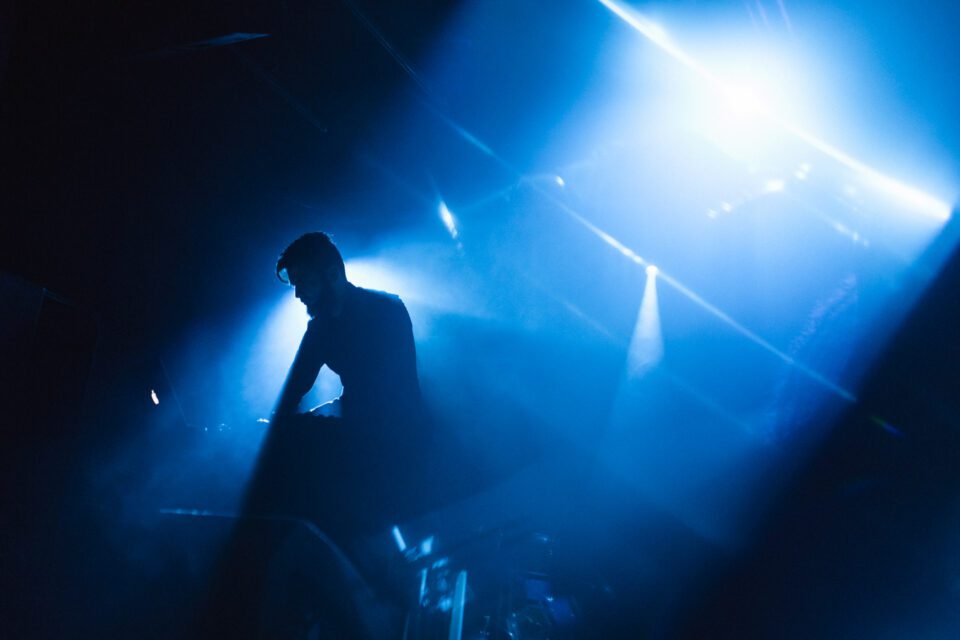 Canon EOS 5D Mark II + 35mm @ 35mm, ISO 4000, 1/250, f/1.8
Canon EOS 5D Mark II + 35mm @ 35mm, ISO 4000, 1/250, f/1.8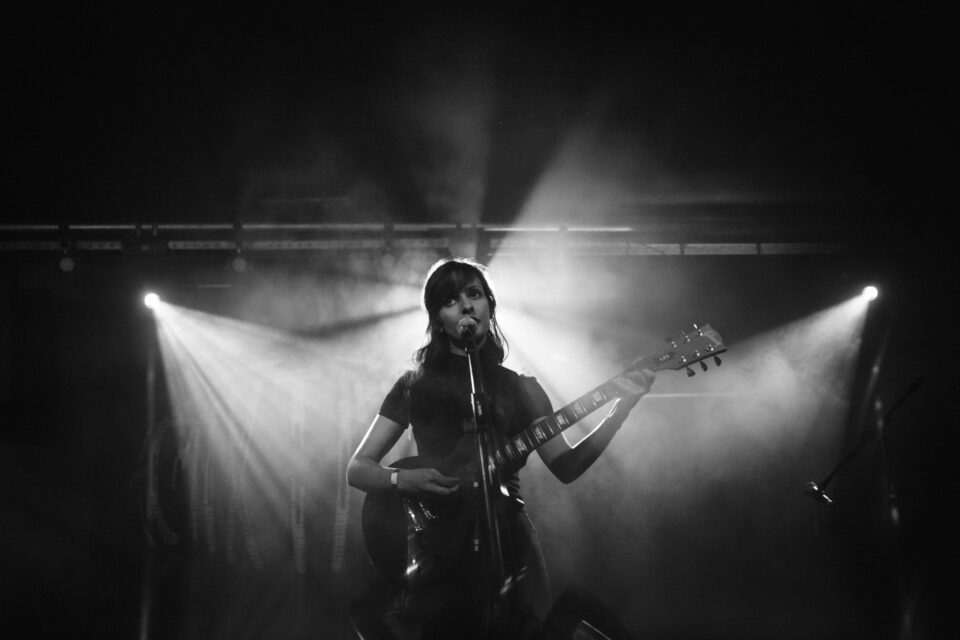 Canon EOS 5D Mark II + 35mm @ 35mm, ISO 4000, 1/250, f/1.4
Canon EOS 5D Mark II + 35mm @ 35mm, ISO 4000, 1/250, f/1.4 Canon EOS 5D Mark II + 35mm @ 35mm, ISO 6400, 1/160, f/2.0
Canon EOS 5D Mark II + 35mm @ 35mm, ISO 6400, 1/160, f/2.0
استخدام التأثيرات العملية
تعتبر التطبيقات العملية (التأثيرات العملية) رائعة، بما في ذلك التصوير الفوتوغرافي للحفلات الموسيقية. إذا كان الأمن يسمح لك بإحضار شيء صغير لاستخدامه في التصوير الفوتوغرافي الخاص بك – شيء مثل المنشور أو مرآة صغيرة – فاستمر في تجربته. يمكن أن يجعل الإضاءة الباهتة تبدو أكثر إثارة للاهتمام.
كاميرا Canon EOS 5D Mark II + 35 مم عند 35 مم، ISO 4000، 1/250، f/1.8
كاميرا Canon EOS 5D Mark II + 35 مم عند 35 مم، ISO 4000، 1/250، f/1.4
كاميرا Canon EOS 5D Mark II + 35 مم عند 35 مم، ISO 6400، 1/160، f/2.0


